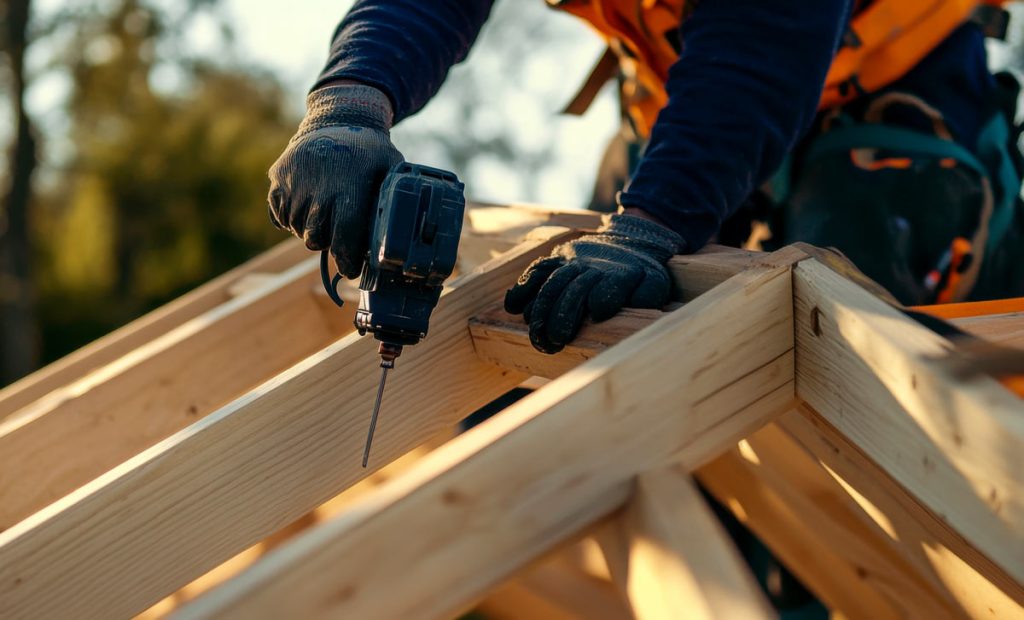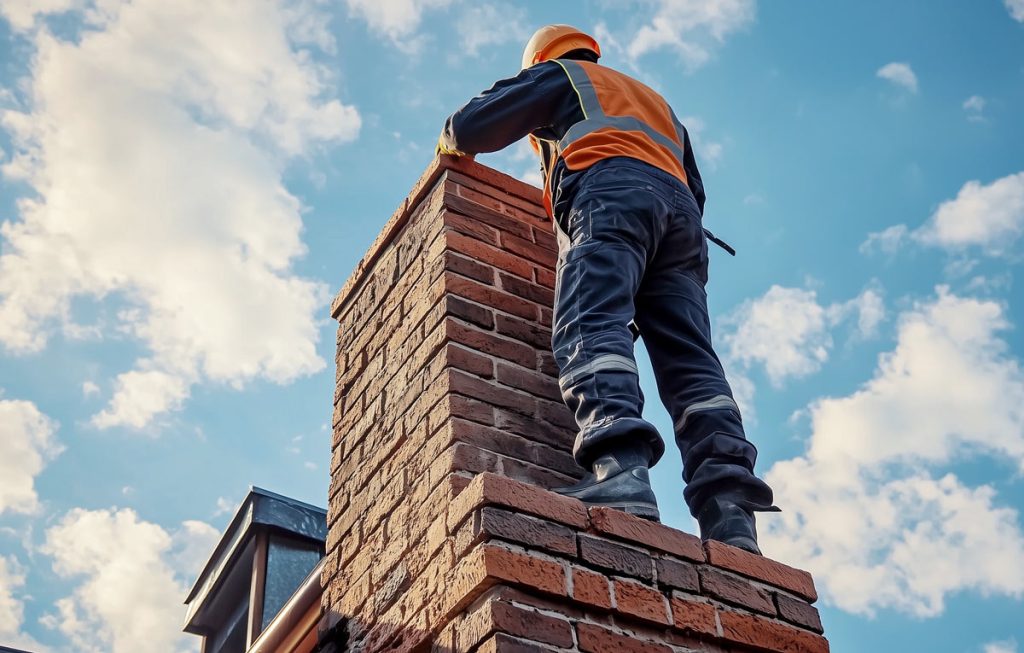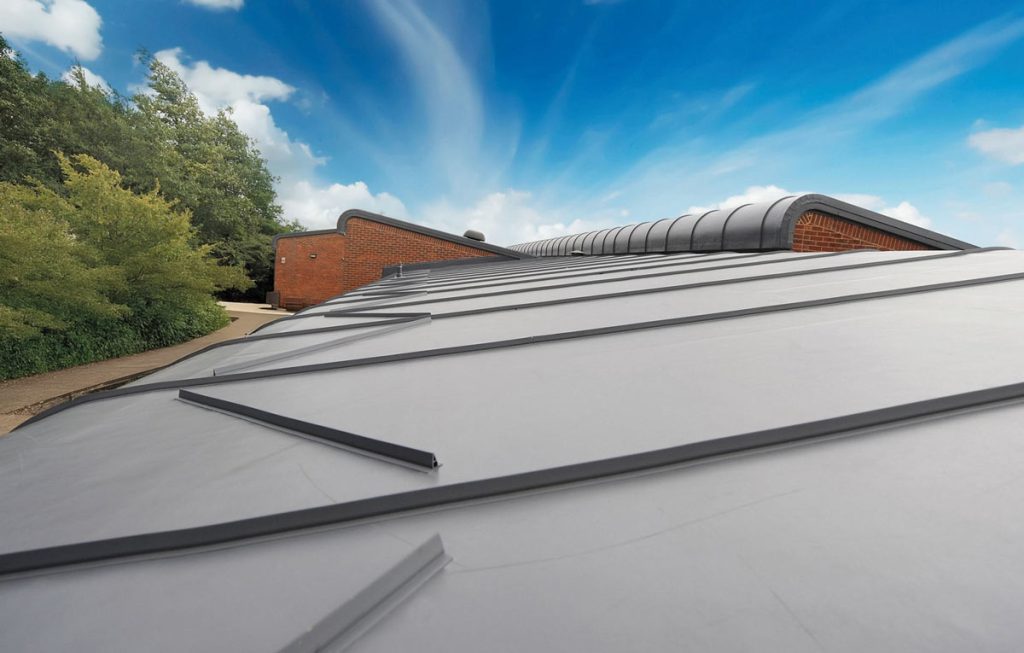When it comes to roofing, one of the most important decisions a homeowner may face is whether to maintain a flat roof or to convert it to a pitched one. Flat roofs, which were once seen as a practical and affordable choice for many homes, can present a variety of challenges, particularly in areas with heavy rainfall or snow. Pitched roofs, on the other hand, have long been valued for their aesthetic appeal, durability, and ability to withstand adverse weather conditions. If you are considering whether a flat-to-pitch roof conversion is the right choice for your home, this post will guide you through the key considerations, benefits, and potential drawbacks of such a conversion.
What is a Flat to Pitch Roof Conversion?
A flat-to-pitch roof conversion involves changing the structure of a flat roof to a pitched roof. This typically involves raising the roofline and installing a sloped framework, often using timber trusses or rafters. The angle of the pitch varies depending on the design, but a common range for a pitched roof is between 30 and 45 degrees. The new roof structure is then covered with materials such as tiles, slates, or metal sheeting.
Flat roofs are often found on extensions, garages, and modern homes due to their minimalist design and cost-effective construction. However, the decision to convert to a pitched roof is becoming increasingly popular for a variety of reasons.
Benefits of Flat to Pitch Roof Conversions
1. Improved Drainage
One of the primary advantages of converting a flat roof to a pitched roof is the significant improvement in drainage. Flat roofs are prone to water pooling, especially if the drainage system isn’t properly designed or maintained. Even slight dips or sagging in a flat roof can create areas where water collects, leading to leaks, water damage, and structural issues over time. Pitched roofs, on the other hand, allow water to run off naturally, reducing the risk of leaks and water damage.
The steeper the pitch, the more efficient the drainage system will be. This is particularly important in areas with heavy rainfall or snow. The sloping angle of a pitched roof allows water and debris to flow off easily, preventing the build-up that often plagues flat roofs.
2. Increased Property Value
A pitched roof is often seen as more aesthetically pleasing and traditional compared to a flat roof. This can make your home more attractive to potential buyers if you decide to sell in the future. Many people prefer the look of pitched roofs, which offer greater architectural variety and a classic appearance.
Furthermore, a pitched roof can add additional space to your home, either in the form of an attic or loft area, which may be converted into usable living space. This added space can increase the overall square footage and value of your property.
3. Better Insulation and Energy Efficiency
Pitched roofs tend to offer better insulation compared to flat roofs. This is because the shape and structure of a pitched roof allow for better airflow and ventilation. In a flat roof, the space is typically confined, and without proper insulation, it can become a source of heat loss in the winter and excessive heat gain in the summer.
With a pitched roof, there is greater room for insulation in the loft space, helping to keep the home warmer in winter and cooler in summer. This can lead to energy savings and a more comfortable living environment. Many homeowners also take advantage of the extra space in a pitched roof for installing energy-efficient systems, such as solar panels or roof vents, which can further reduce energy costs.
4. Longer Lifespan and Durability
Pitched roofs generally have a longer lifespan than flat roofs. The materials used in pitched roofs, such as slate, tiles, or metal, are known for their durability and resistance to weathering. Flat roofs, while cost-effective initially, can require more frequent repairs due to water damage, ponding, and material degradation over time.
A well-constructed pitched roof can last decades—sometimes even over 50 years—depending on the materials and the quality of installation. In contrast, flat roofs may require more frequent maintenance and replacement, making the long-term cost of ownership higher.
5. Increased Design Options
When converting to a pitched roof, homeowners have a wider range of design options to choose from. A pitched roof can be customized to suit the style of your home, whether you opt for a traditional gable roof, a more contemporary hipped roof, or even a more complex design like a mansard or dormer roof.
You can also choose from various roofing materials, including clay or concrete tiles, slate, metal sheeting, or asphalt shingles. This gives you more flexibility in choosing a material that complements the architecture of your home and fits your budget.
Drawbacks of Flat to Pitch Roof Conversions
1. High Initial Cost
One of the major considerations when converting a flat roof to a pitched roof is the cost. Flat to pitch roof conversions can be expensive, particularly if structural alterations are required to support the new design. The conversion process involves not only building the pitched structure but also replacing the roofing materials, improving drainage, and potentially installing new insulation.
The cost can vary depending on the complexity of the project, the materials chosen, and the size of the roof. On average, the cost of converting a flat roof to a pitched roof can range from several thousand to tens of thousands of pounds. For homeowners on a tight budget, this may not be the most affordable option.
2. Disruption and Time Commitment
A flat-to-pitch roof conversion is a significant construction project, and it’s not something that can be completed quickly. The process can take several weeks or even months, depending on the size and complexity of the conversion. During this time, your home may experience a considerable amount of disruption, with scaffolding, construction noise, and potential dust and debris around your property.
If your home is occupied during the conversion, you will also need to make temporary arrangements for any areas that may be affected by the construction, particularly if the work takes place in living spaces directly under the roof.
3. Structural Considerations
Not all buildings are suitable for a flat-to-pitch roof conversion. Some homes, especially those with older or weaker structures, may need significant reinforcement to support the weight of the pitched roof. This may involve additional costs for structural engineering assessments and repairs to ensure the building can safely support the new design.
In some cases, converting to a pitched roof may not be feasible due to limitations in the building’s design or the need for extensive renovations. It’s important to consult with a professional contractor before proceeding to determine whether the conversion is structurally viable for your home.
4. Planning Permission and Regulations
Depending on your location and the extent of the conversion, you may need planning permission or to comply with local building regulations. Converting a flat roof to a pitched roof can alter the external appearance of your property, and this may require approval from local authorities, especially in conservation areas or if your property is listed.
Before starting the conversion, it’s crucial to check with your local planning department to ensure that the changes are compliant with regulations. Failure to obtain the necessary permissions could result in fines or the need to undo the work.
Is a Flat to Pitch Roof Conversion Right for You?
A flat to pitch roof conversion can offer a wide range of benefits, including improved drainage, better insulation, increased property value, and a longer-lasting roof. However, it’s important to consider the potential drawbacks, including the high initial cost, disruption, and structural challenges.
Before deciding if this conversion is the right choice for your home, it’s essential to consult with a professional roofing contractor or architect. They can assess your property’s suitability for a pitched roof, provide a clear cost estimate, and help you navigate the planning and regulatory requirements. If you’re seeking a more durable, energy-efficient, and aesthetically pleasing roof, a flat to pitch conversion could be a wise long-term investment. However, it’s important to ensure that it aligns with your budget, timeline, and overall goals for your home.




